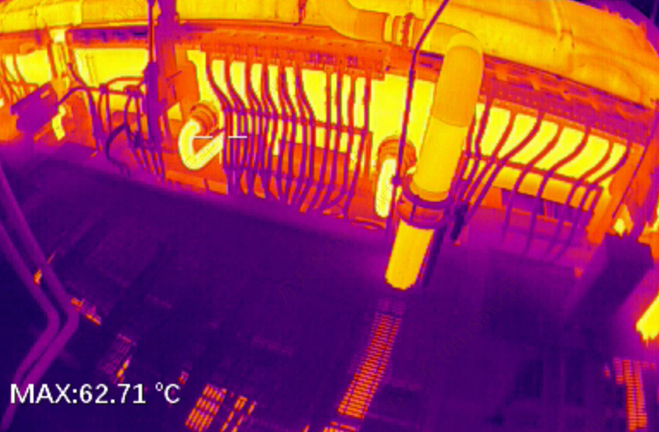Infrared imaging is a highly developed technology that can detect target objects and diagnose issues based on the thermal images. It is widely used for safety monitoring, emergency response, firefighting, and equipment inspection in various industries such as petrochemicals. This technology helps identify potential problems, allowing users to detect issues early and take timely action.
The explosion-proof infrared thermal imaging camera is capable of measuring the temperature of objects or areas without direct contact. It quickly and accurately presents the measured temperature as a thermal image, where the temperature differences are reflected in proportional color gradients, making it easier for users to observe temperature variations and identify discrepancies between the target and its surroundings.
Guide's Explosion-Proof Infrared Thermal Imaging Camera: High-Precision Temperature Monitoring for Various Applications
Measurement accuracy is crucial for assessing temperature variations. By comparing the temperature of the target with the surrounding environment, the camera generates a thermal image of the area being inspected. Thanks to its high accuracy, the resulting thermal image clearly shows regions of high and low temperature, allowing inspection personnels to easily spot differences. This facilitates data-driven decisions for follow-up actions. The explosion-proof infrared thermal imaging camera operates in a temperature range of -20℃~550℃, making it suitable for various environments such as petrochemical factories and safety monitoring sites. It can simultaneously monitor multiple points within the area and present the results as an image for easy reference, greatly enhancing usability and efficiency.
Thermal Imaging: Accurate Detection and Flexibility
The thermal image produced by the Guide's explosion-proof camera for oil and gas is directly related to the object being measured. The radiation emitted by the target is received and converted into an image, which we observe as a thermal map. Typically, the camera sets the highest temperature in the area or equipment as the default high-temperature tracking point. This includes center point temperature measurement, key area temperature measurement (ROI), and high-temperature tracking. In addition to the default points, users can define up to three additional measurement points, significantly improving the accuracy and flexibility of temperature detection in high-risk and complex environments. This reduces measurement errors and ensures precise data collection.
The thermal camera offers several pseudo colors, such as white hot, black hot, rainbow, red hot, etc. These options allow users to better distinguish temperature variations in hazardous environments and adapt the imaging to their preferences, enhancing the overall user experience. The thermography camera also provides multiple image modes to suit the specific demands of different high-risk environments, reflecting temperature differences of the target area or equipment.
Additionally, the explosion-proof camera for oil and gas can connect to terminals for real-time data transmission or screen projection, allowing measured data to be instantly shared with the command center. This enables real-time situation updates and timely decision-making in response to current conditions.













.svg)



_fuben.jpg)

